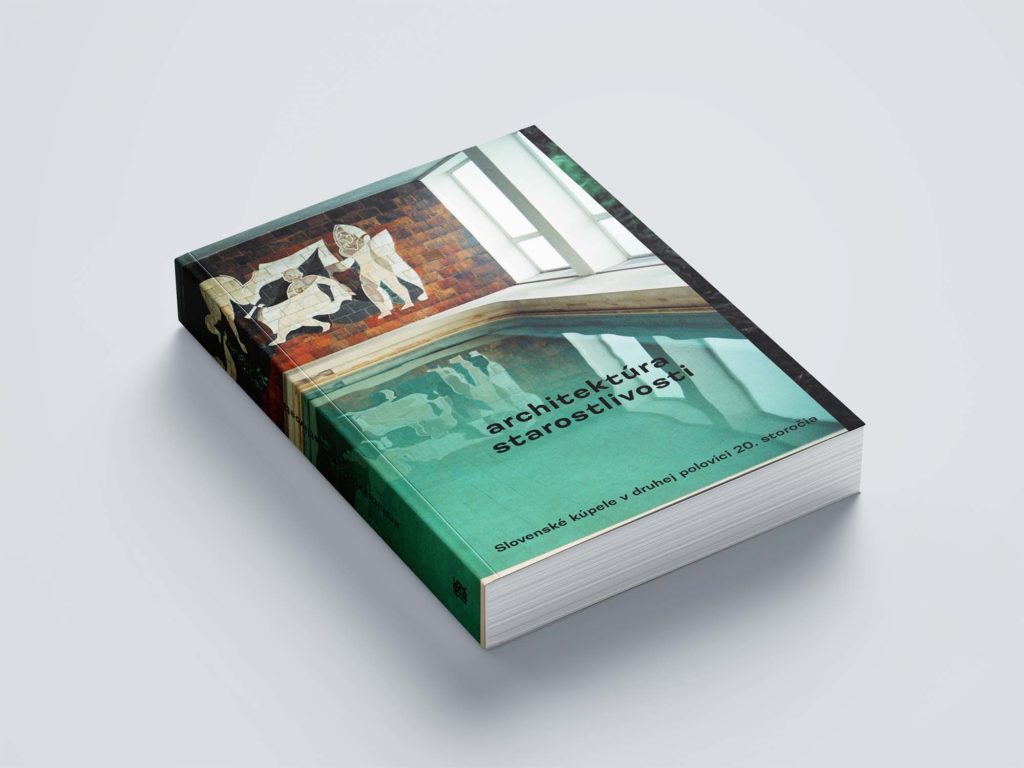ARCHITECTURE OF CARE
Slovak Spas in the Second Half of the 20th Centrury

How do care and architecture relate? What does architecture of care stand for? Do we take enough care of it?
Slovakia is abundant in mineral water sources, thanks to which many towns were transformed into spa zones and a number of spa buildings were built. Although the development of spa towns began as soon as in the 19th century, most attention was paid to this area during the socialist era. The title of the book Architektúra starostlivosti (Architecture of Care) refers to the phenomenon of balneology in the territory of present-day Slovakia after World War II, but also to the period perception of the body, regeneration and the way of life associated to it. The state of Czechoslovakia invested great amounts of money into this area and specialized institutions were established, focusing on the specifics of spa treatment, but also on spa urban planning and architecture. Thanks to this, peculiar forms with sophisticated spatial arrangement, reflecting the needs of spa visitors, were constructed.
The title of the book ARCHITECTURE OF CARE reflects the phenomenon of balneology in the area of today´s Slovakia in the period after WW2, and the way the human body, its regeneration and lifestyle was perceived at that time. The spa care was based on prevention to the development of illness. This attitude disappeared after 1989. Our present hectic lifestyle fails to afford enough time for our care of ourselves, medical care mostly deals with consequences.
The architect Martin Zaiček presents his detailed research offering comprehensive information about the state spa apparatus, the most important realizations and their current condition or their social (in)acceptance (Bardejov, Trenčianske Teplice, Piešťany, Štrbské Pleso, Brusno, Bojnice, etc.). The interview with Peter Krahulec, the former head inspector for spas and springs, shows how the spas happened to become an important issue for the government and how decisions about these massive investments were made. The architecture theoretician Jarmila Bencová analyzes the historic relation of water and architecture, the cultural anthropologist Ivana Rumanová seeks for parallels of the specific spa environment and the utopian visions of the post-work society, and the curator Zuzana Jakalová discusses the attitude of today´s capitalist society to illness and its tendency to normalize human bodies.
Publikáciu zostavili © Martin Zaiček, Andrea Kalinová,
Petra Hlaváčková
Autori textov © Jarmila Bencová, Zuzana Jakalová,
Ivana Rumanová, Martin Zaiček
Fotografie © Andrea Kalinová, Peter Kuzmin
Recenzentky: Maria Topolčanská, Michaela Pašteková
Zber a spracovanie orálnej histórie: Barbora Németh
Odborná redakcia textov: Petra Hlaváčková
Grafický dizajn & layout: Magdaléna Scheryová, studio onaonaona
Vydavateľ © Archimera, občianske združenie
ISBN 978 – 80 – 972341 – 5 – 7
Publikácia vznikla aj vďaka finančnej podpore Fondu na podporu umenia, Ministerstvu kultúry a prispievateľom na StartLab-e.






